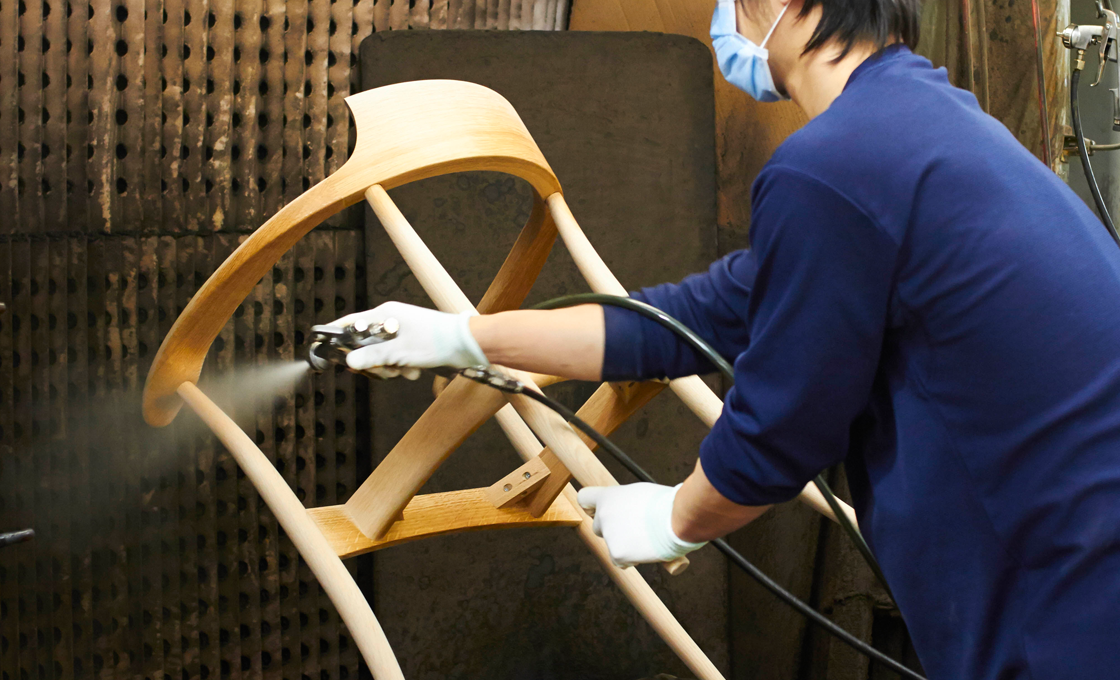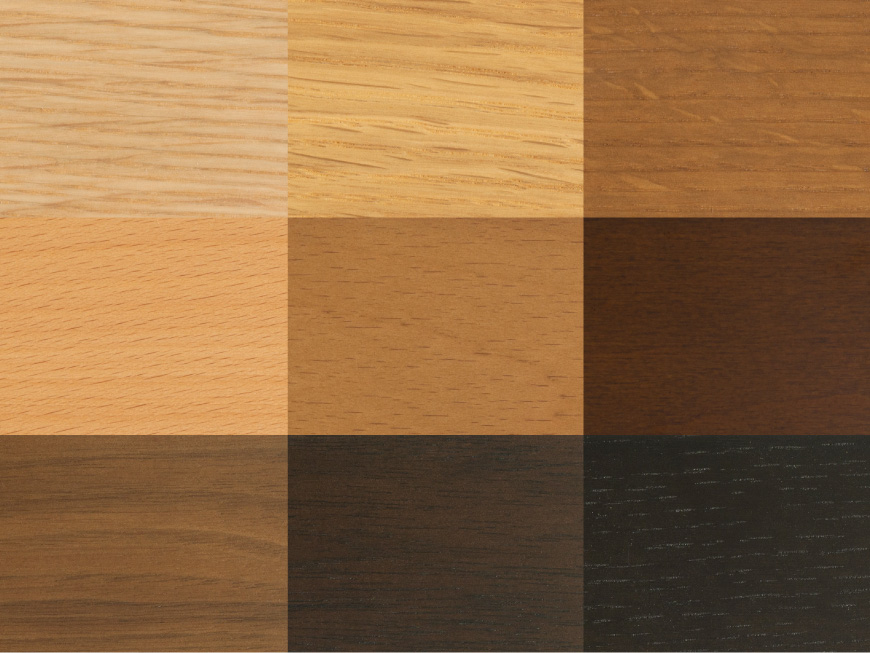
About materials and paint colors
We procure and use high-quality timber from Japan and overseas based on our own standards. We have a wide variety of painting colors that make use of the characteristics of each kind of wood and we have two types of painting methods.
Material type and paint color
Different types of wood have different characteristics and grain. In addition to the wood types listed below, we are also developing products using local materials.
-
White Oak
 Solid and hard, the wood grain is straight with a unique presence. Due to its unique fiber structure, when lumbered with a straight grain, a shining silver grain similar to the stripes on the back of a tiger, known as tiger stripes, appears, giving it a unique look. Hida Sangyo mainly uses North American white oak that is around 100 years old. *Oak wood may be used for some parts such as curved wood parts.
Solid and hard, the wood grain is straight with a unique presence. Due to its unique fiber structure, when lumbered with a straight grain, a shining silver grain similar to the stripes on the back of a tiger, known as tiger stripes, appears, giving it a unique look. Hida Sangyo mainly uses North American white oak that is around 100 years old. *Oak wood may be used for some parts such as curved wood parts. -
Red Oak
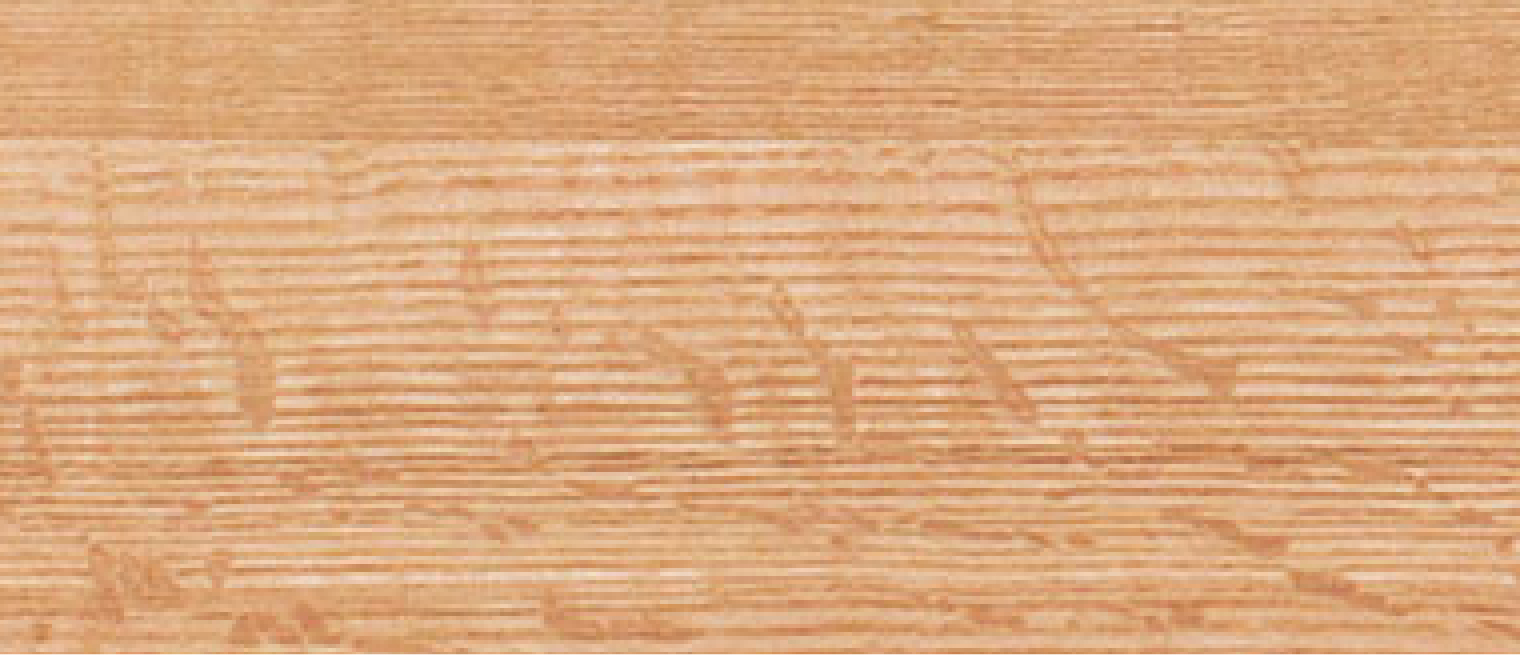 The grain is straight and hard, and compared to white oak, it is characterized by a gentle pinkish color. It is called red oak from the beauty of autumn leaves. Hida Sangyo mainly uses North American red oak.
The grain is straight and hard, and compared to white oak, it is characterized by a gentle pinkish color. It is called red oak from the beauty of autumn leaves. Hida Sangyo mainly uses North American red oak. -
Beech
 The wood grain is fine, hard and resistant to impact, so it is useful as a furniture material. It is also sticky and resistant to cracking, making it suitable for bentwood processing. Hida Sangyo mainly uses European beech wood.
The wood grain is fine, hard and resistant to impact, so it is useful as a furniture material. It is also sticky and resistant to cracking, making it suitable for bentwood processing. Hida Sangyo mainly uses European beech wood. -
Walnut
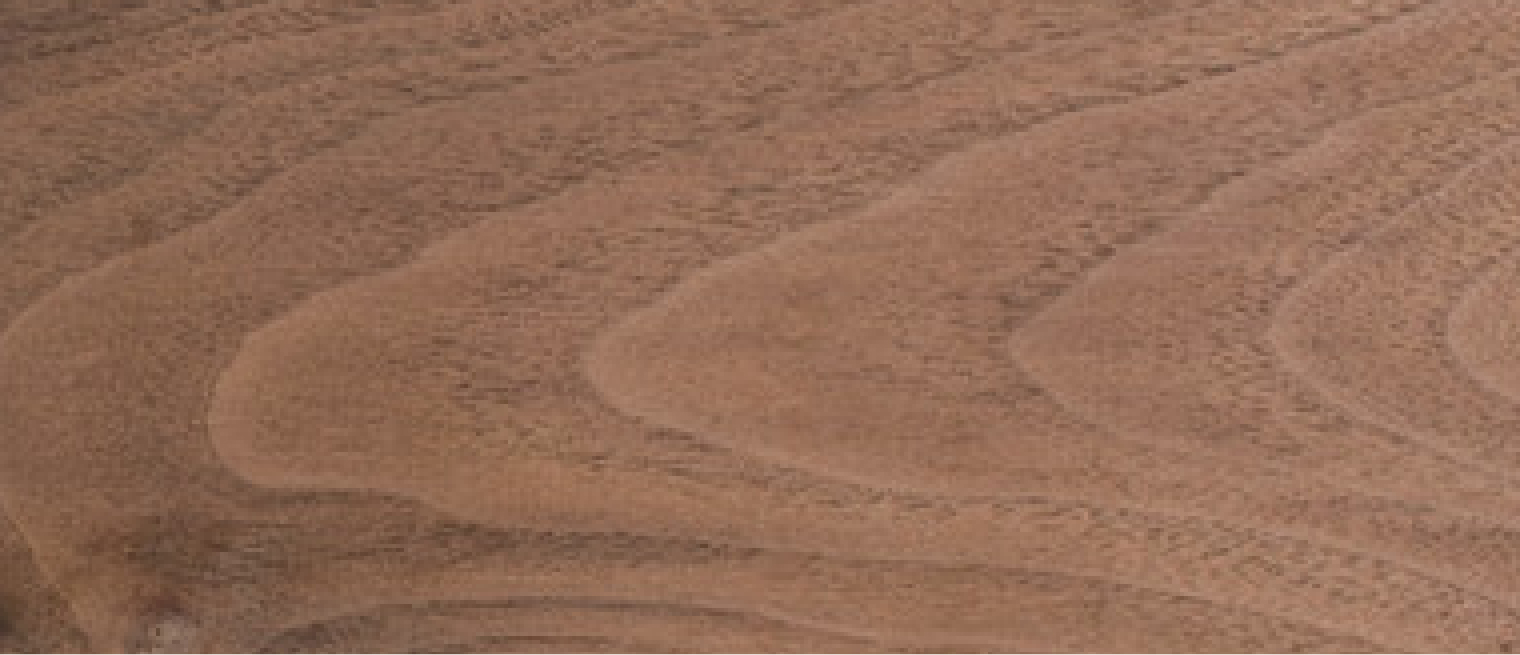 Walnut is one of the world's three major woods along with teak and mahogany. It is a high-class material with a subdued color and a beautiful heathered grain with a profound feeling. Because it contains a lot of tannin, it will be polished and the texture will deepen as you use it. Hida Sangyo uses black walnut wood from North America.
Walnut is one of the world's three major woods along with teak and mahogany. It is a high-class material with a subdued color and a beautiful heathered grain with a profound feeling. Because it contains a lot of tannin, it will be polished and the texture will deepen as you use it. Hida Sangyo uses black walnut wood from North America. -
Birch
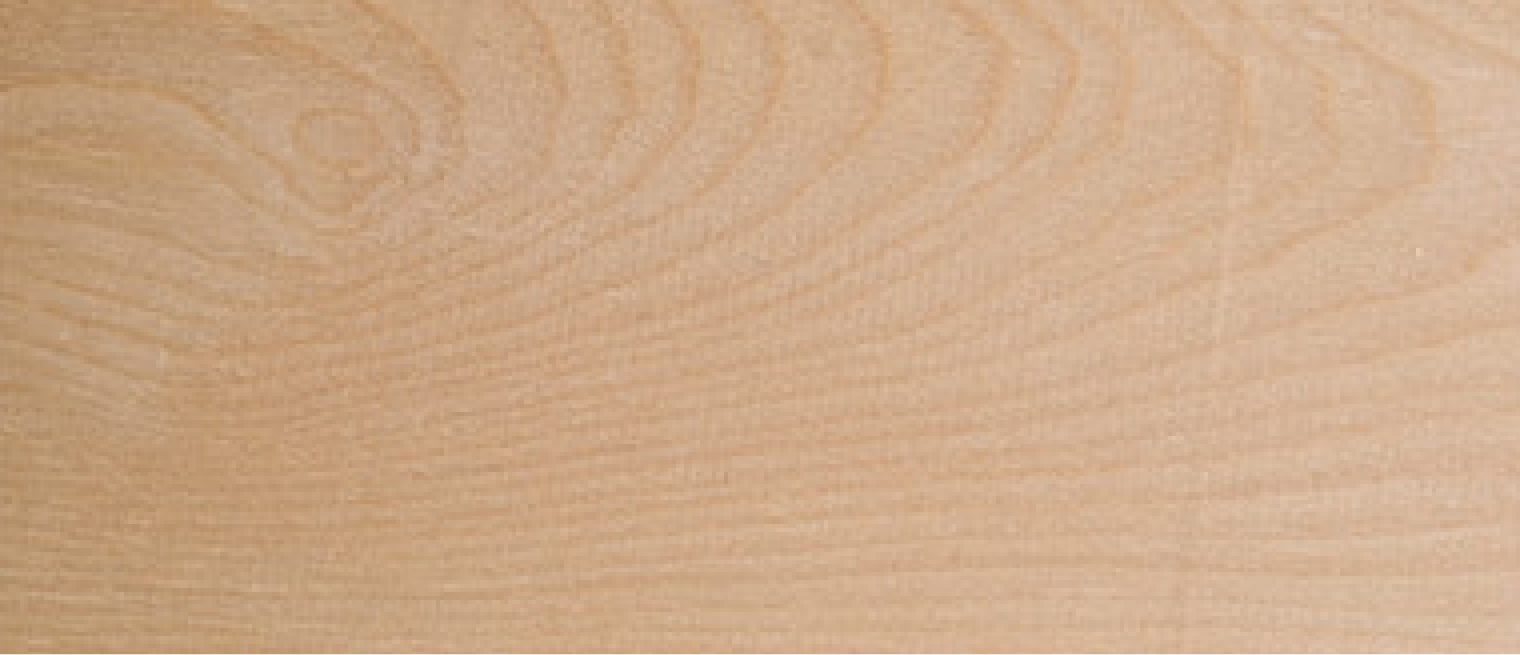 The annual rings are fine and the texture is delicate and precise. As a result, it grows slowly and takes a long time to become a good furniture material. The heartwood is red and the sapwood is white. Hida Sangyo uses birch wood from Hokkaido.
The annual rings are fine and the texture is delicate and precise. As a result, it grows slowly and takes a long time to become a good furniture material. The heartwood is red and the sapwood is white. Hida Sangyo uses birch wood from Hokkaido. -
Japanese Cedar
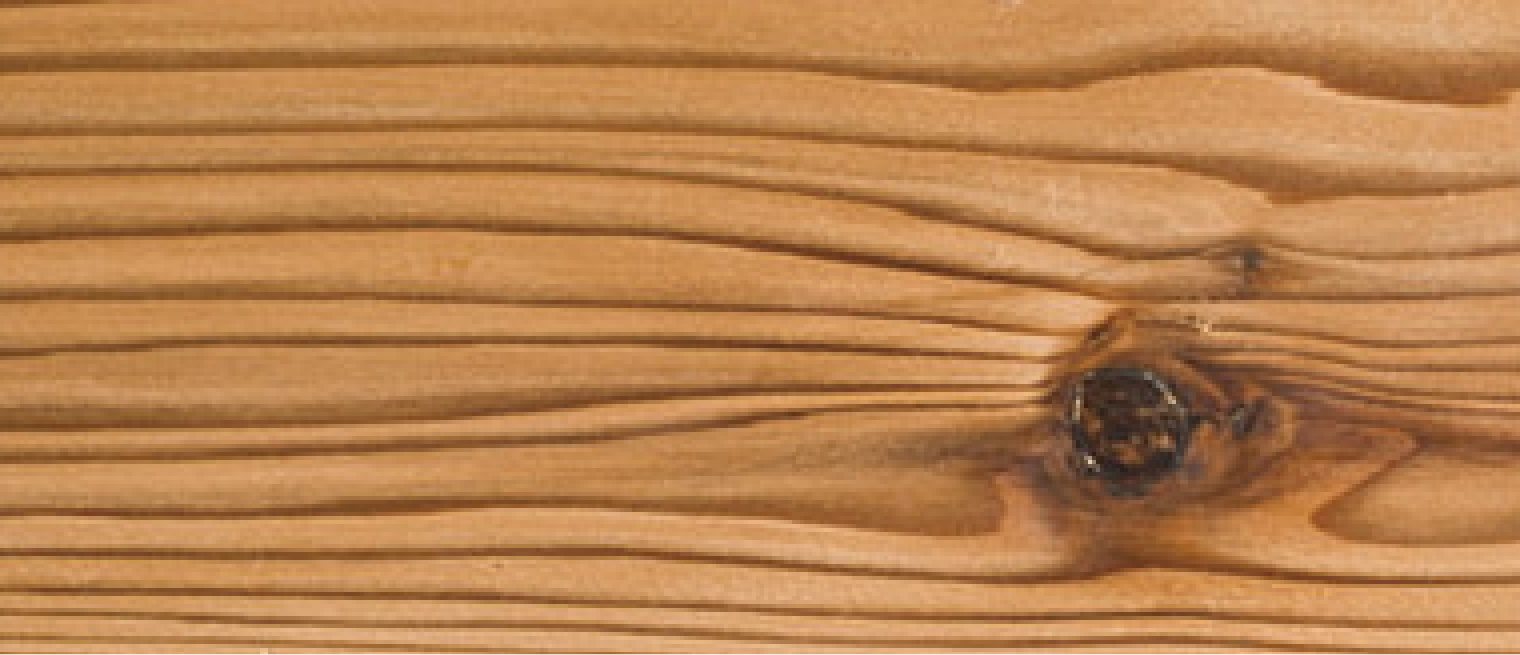 The scientific name for domestic cedar is “Cryptomelia japonica”, which means “hidden property of Japan”. Until now, its softness was considered unsuitable for furniture, but Hida Sangyo has developed a technology to increase its strength through heat compression and commercialized it. It features beautiful wood grain and a warm touch. Hida Sangyo mainly uses cedar wood from Gifu Prefecture.
The scientific name for domestic cedar is “Cryptomelia japonica”, which means “hidden property of Japan”. Until now, its softness was considered unsuitable for furniture, but Hida Sangyo has developed a technology to increase its strength through heat compression and commercialized it. It features beautiful wood grain and a warm touch. Hida Sangyo mainly uses cedar wood from Gifu Prefecture. -
Hinoki
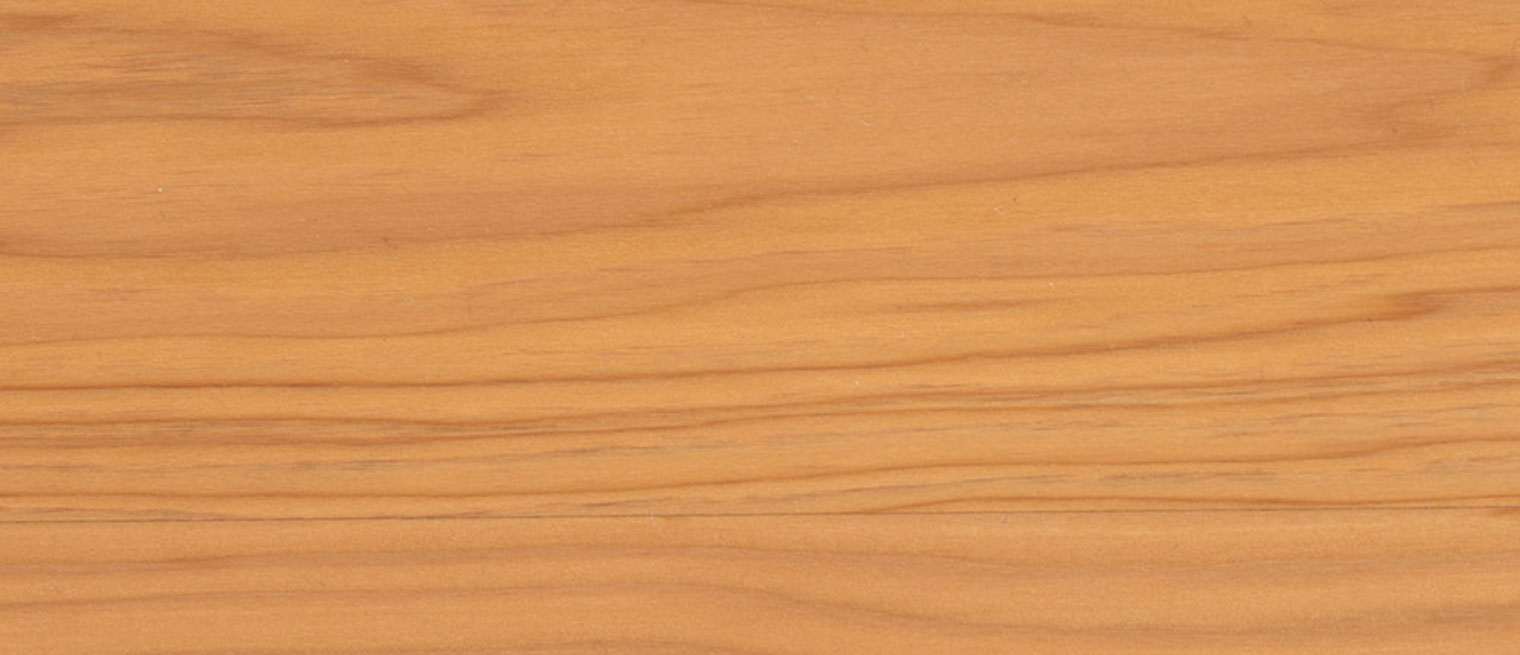 Hinoki is the second most planted wood in Japan after Japanese cedar. It has a dense and beautiful luster and emits a fragrance that Japanese people like. In particular, it is highly resistant to fungi and insects, and has been regarded as the highest quality building material. At Hida Sangyo, we have developed a technology to increase strength through heat compression, and commercialized it. It has a beautiful whitish color throughout.
Hinoki is the second most planted wood in Japan after Japanese cedar. It has a dense and beautiful luster and emits a fragrance that Japanese people like. In particular, it is highly resistant to fungi and insects, and has been regarded as the highest quality building material. At Hida Sangyo, we have developed a technology to increase strength through heat compression, and commercialized it. It has a beautiful whitish color throughout. -
Japanese Oak
 Japanese Oak belongs to the beech family, the same as white oak, and is a general term for domestically produced Quercus crispula and Quercus serrata. It is solid and hard, and the wood grain is straight and has a unique presence. Due to its unique fiber structure, when lumbered with a straight grain, a shining silver grain similar to the stripes on the back of a tiger, known as tiger stripes, appears, giving it a unique look. Also, depending on how the tree grows, various colors appear.
Japanese Oak belongs to the beech family, the same as white oak, and is a general term for domestically produced Quercus crispula and Quercus serrata. It is solid and hard, and the wood grain is straight and has a unique presence. Due to its unique fiber structure, when lumbered with a straight grain, a shining silver grain similar to the stripes on the back of a tiger, known as tiger stripes, appears, giving it a unique look. Also, depending on how the tree grows, various colors appear. -
Japanese Chestnut
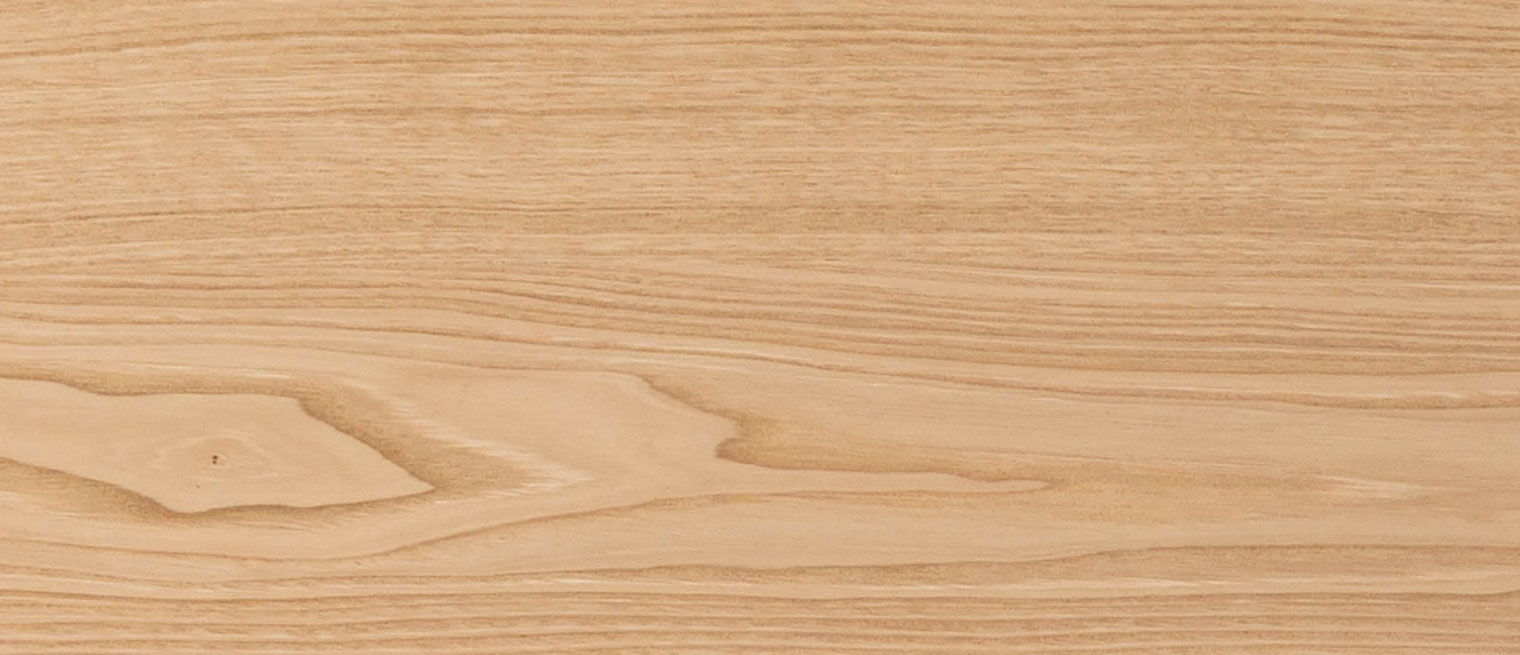 The domestic chestnut tree is a wood that has been loved and valued by people for a long time. It is sticky, water resistant and durable. A beautiful texture is achieved by taking advantage of the distinct wood grain that is characteristic of chestnuts. In addition, because it contains tannin, it changes to a calm color over time, making it a material that can be enjoyed over time.
The domestic chestnut tree is a wood that has been loved and valued by people for a long time. It is sticky, water resistant and durable. A beautiful texture is achieved by taking advantage of the distinct wood grain that is characteristic of chestnuts. In addition, because it contains tannin, it changes to a calm color over time, making it a material that can be enjoyed over time. -
Japanese Beech
 At the time of our founding, we started making bentwood furniture using the rich forest resources of the beech forest in this area where the tradition of craftsmanship in Hida is still alive.
At the time of our founding, we started making bentwood furniture using the rich forest resources of the beech forest in this area where the tradition of craftsmanship in Hida is still alive.
Domestic beech has a fine grain and is sticky, making it suitable for bentwood processing. To commemorate the 100th anniversary of our founding, we have reprinted the bentwood "No. 7 chair". -
Two Tone
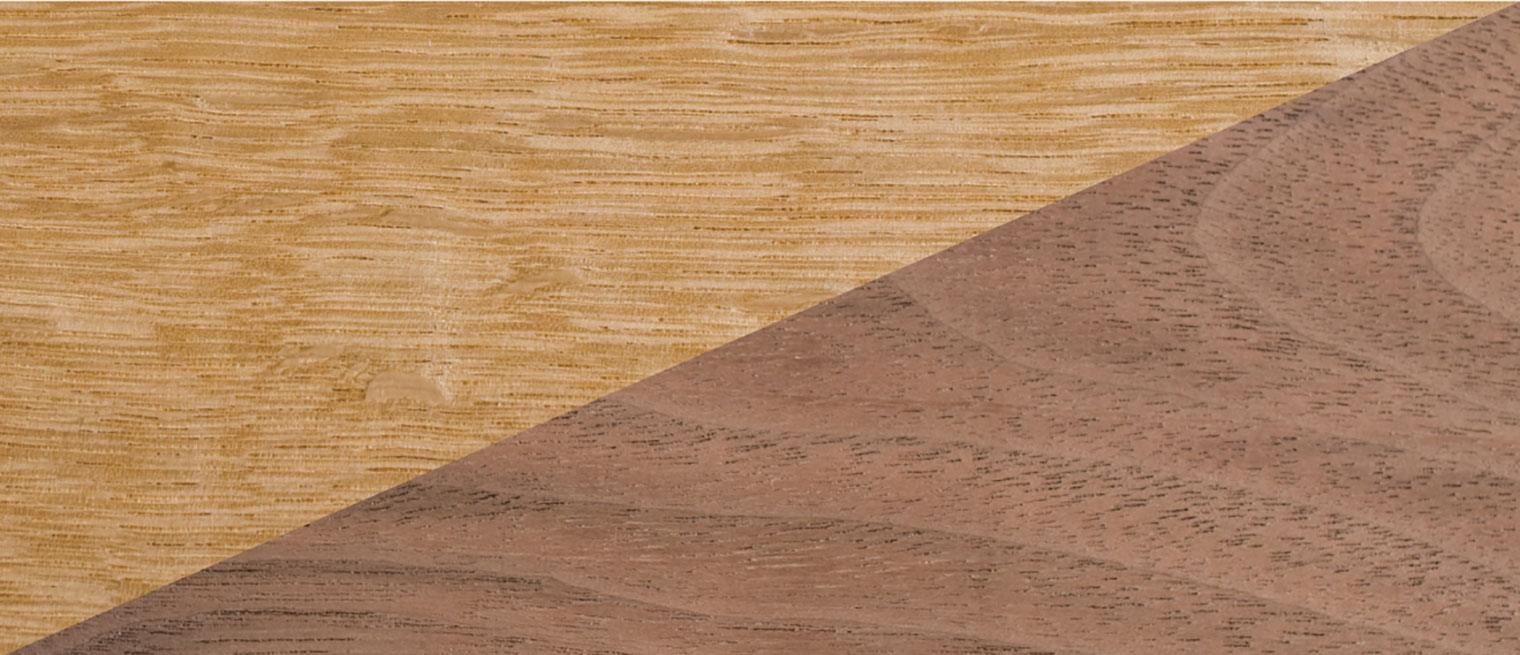 Two-tone uses two types of wood for each piece of furniture. You can enjoy the grain and texture of each wood species. This is only available on special order for certain collections. Please inquire.
Two-tone uses two types of wood for each piece of furniture. You can enjoy the grain and texture of each wood species. This is only available on special order for certain collections. Please inquire.
Commitment to Wood
Hida Sangyo manages and produces everything in-house, from sawing to drying and processing. In addition, we also focus on the utilization of unused materials that have not been used for furniture until now. Improving the strength, processing performance, and design of soft wood such as cedar. We are working on the development of targeted compression technology, that makes use of wood with knots and branches, and research on small-diameter trees.

We have acquired the international certification FSC® COC Certification as a legal wood supplier, and have established a system to manufacture products using wood produced from properly managed forests.
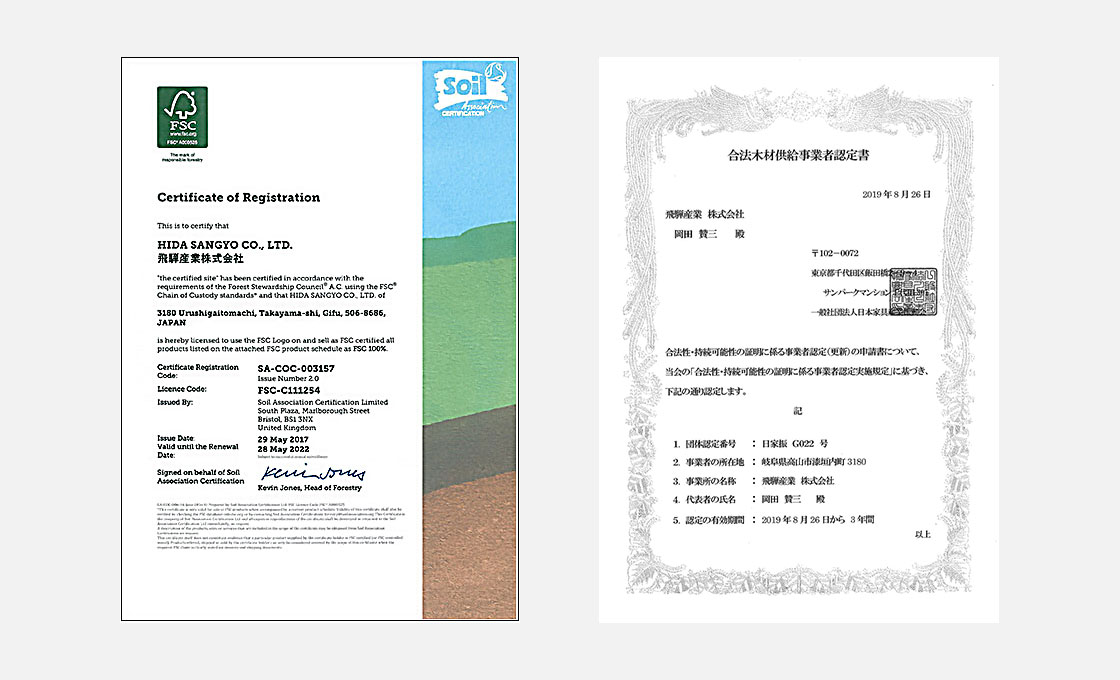
Commitment to Painting
At Hida Sangyo, there are two types of painting methods: oil finishing and polyurethane resin painting. We use all F☆☆☆☆ (F-four star) paints. F☆☆☆☆ is a JIS/JAS standard that grades the amount of formaldehyde emitted, which is the cause of sick building syndrome and is classified according to the amount of formaldehyde emitted from building materials, paints, interior materials, adhesives, etc. The more ☆, the lower the amount emitted. ☆☆☆☆ is the best grade (average emission 0.3mg/L or less).
In addition, in the case of chairs, non-slip coating is applied. (Excluding some paint colors) Non-slip paint has the advantage that the seat surface is less slippery than normal paint, allowing you to maintain a comfortable sitting posture.
